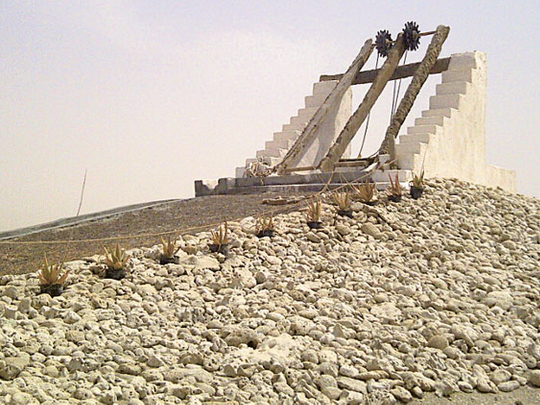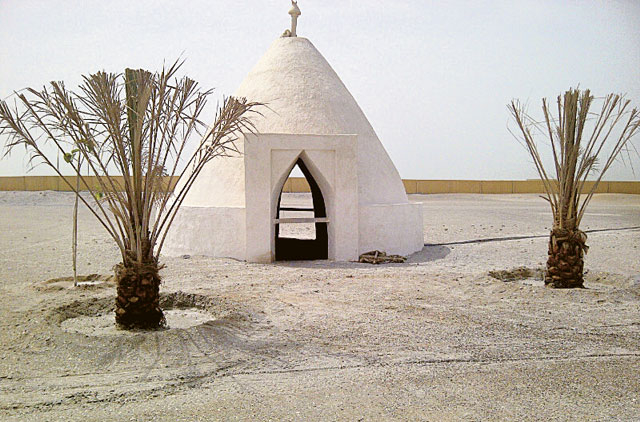
Dubai A new multi-million dirham eco-park is set to open this month to dignitaries and the public alike, offering an unusual hands-on encounter with Bedouin and seafaring traditions of a bygone UAE era, Gulf News has learnt.
The Heritage Island at Dubai Waterfront on Palm Jebel Ali was originally scheduled to open in February but was delayed to tweak the one-million square foot island village to better host its wide array of eco-tourism activities with a view to preserving the cultural practices of past centuries.
The one-kilometre-long, 500-metres-wide man-made island — connected via a causeway — was provided to project host Emirates Marine Environmental Group (EMEG) by Palm Jebel Ali architects Nakheel.
Heritage preservation project
Major Ali Saqr Al Suwaidi, EMEG president, told Gulf News Monday that he first hatched the idea to create a heritage preservation project in Dubai more than 20 years ago and said it is extremely fulfilling to see the project coming to fruition.
Visitors to the site overlooking EMEG's Ghantoot Reserve will be met by a high stone wall that encompasses the village, punctuated by a large gateway.
After flying in by seaplane, or coming by bus or car, visitors "can spend the whole day or just a couple of hours, it's their choice," Al Suwaidi said.
No modern contraptions
Once passing through the gates of Heritage Island's outer walls, visitors will be asked to leave the modern world behind and change into traditional clothing worn by desert dwellers.
Full-period costume will be complemented, Al Suwaidi said, by a strictly authentic UAE village environment in which all amenities of modern-day life are lacking to recreate conditions that existed many years ago.
There are no cars, gas-operated devices or electronic gadgets allowed inside Heritage Village to preserve the natural quiet of a seashore settlement on the Gulf that existed in another time, he said.
The daily machinations of the settlement are staffed by more than 40 employees offering daily demonstrations of the way life used to be.
"People live here like we did 200 years ago," Al Suwaidi said.
Authentic handcrafts
A long list of activities includes everything from learning to make authentic handcrafts from palm leaves and helping catch fish in traps at low tide to assisting villagers produce real butter, milk and cheese from on-site livestock such as cows, sheep and goats.
For lunch, visitors "can cook their freshly caught fish on the spot. We will be also cooking four or five types of bread."
The history park contains a diving village where visitors can learn the art of sifting through oyster beds in search of pearls.
Visitors will also be treated to an up-close-and-personal look at a replica of an ancient cistern in which rain water was collected to endure the long dry seasons, he said.
Falcons, dancing, camels
A variety of other sights and sounds will round out the Heritage Village excursion before an evening meal, Al Suwaidi said, including a live falcon demonstration, historical dancing, and camel and horse racing on the grounds. Nominal entry fee for visit will help non-governmental organisation EMEG maintain and operate the historical village, he said.
Fridays and Saturdays have been reserved for family visits only to help UAE families reconnect with their heritage and expatriate families learn about an old way of life in a completely new way.
Unique features
- Dh3 million capital cost to build Heritage Village (land excluded)
- 40 employees
- One million square-foot village
- Island measures 1km by 500m












